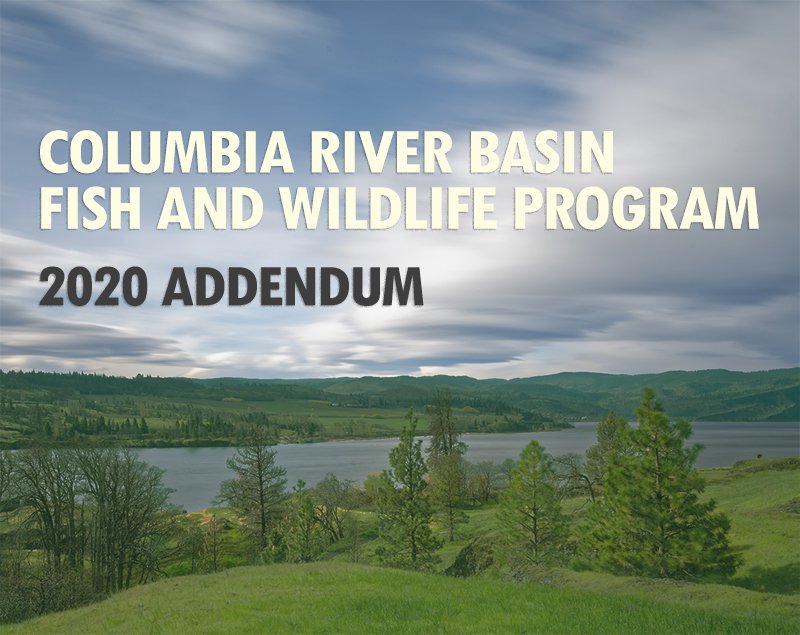Two-Year Revision Of Fish And Wildlife Program Nears End
- August 17, 2020
- John Harrison

This month, the Council completed a two-year process to revise and amend the 2014 Columbia River Basin Fish and Wildlife Program with a 2020 Addendum. Most of the 2014 Program remains in effect.
The addendum was approved in two parts, the first in January of this year and the other this month. The part approved in January focused on implementing projects in the program and identified near-term priorities for implementation and funding, including the impacts of climate change; mitigation for the loss of migratory fish in areas blocked by dams, notably salmon and steelhead; research into the effects of the ocean environment on Columbia River Basin salmon and steelhead; operational changes at Libby and Hungry Horse dams in Montana; the impacts of predators including fish-eating birds and marine mammals; assessing the factors limiting the recruitment and productivity of White Sturgeon; and improved and more direct communication regarding project scope and budgets with the Bonneville Power Administration, which implements the Council’s program.
The part approved this month defines goals and objectives for the program and indicators to measure program performance and progress. The Council developed the goals, objectives, and performance indicators through a series of collaborative public workshops last spring with fish and wildlife agencies, tribes, and the public. The purpose is to describe how the Council and others will assess the program’s performance and improve program implementation using an adaptive management approach. The addendum includes a comprehensive set of references that describe the source material for the objectives and indicators.
The approval this week does not conclude the amendment process. By law, the Council also must adopt – as part of the program – written “findings” explaining how the Council used the recommendations to develop the program amendments. The Council staff is preparing a findings document for consideration by the Council at its September meeting.
Just a few of the accomplishments from implementation of the 2014 Fish and Wildlife Program include:
- Improved 309,281 acres of habitat from 2014-2018 through watershed and stream restoration, planting, removing invasive species, and restoring wetlands and floodplains.
- Supported conservation hatchery activities that are protecting endangered sockeye in the Snake River; spring Chinook in the Upper Grande Ronde, the Lostine River, Catherine Creek and the Clearwater River; spring/summer Chinook in Johnson Creek; and Snake River fall Chinook.
- Improved water management, flow, and passage to protect and increase species survival through the mainstem Columbia and Snake rivers and in the reservoirs behind storage dams.
- Supported and engaged in regional collaborative efforts to reduce the impacts of marine mammals on salmon, steelhead, sturgeon, and lamprey, and also predation by Northern Pikeminnow in the Columbia River and Northern Pike in Lake Roosevelt and tributary rivers above Grand Coulee Dam.
- Established new settlement agreements with the State of Idaho for wildlife mitigation and to improve riparian and floodplain habitat.
- Developed and implemented a plan to ensure the longevity and integrity of the program’s past investments in fish hatcheries, fish diversion screens, and habitat.
- Realized $3.36 million in savings through a collaborative cost-savings workgroup and utilized $2.48 million of the savings to fund new or expanded mitigation initiatives.
The Council began amending the 2014 Program in May 2018 by calling for recommendations, and then received recommendations from fish and wildlife agencies, Columbia River tribes, and others in December 2018. In July 2019 the Council released draft program amendments in the form of a proposed 2020 Addendum to the existing 2014 Program. Public comment on the original draft ended in October 2019.
The Council was directed by Congress in the Northwest Power Act of 1980 to establish the program and revise it at least every five years. The purpose of the program is to protect and enhance all fish and wildlife species in the Columbia River Basin that are adversely affected by hydropower dams on the Columbia River and its tributaries.


